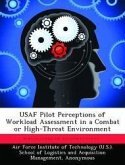As advances in technology are made, the cockpits of the aircraft in the Air Force inventory have become increasingly complex. Consequently, mental demands on the pilot have risen. In a worst case scenario, the pilots have been so saturated with inputs they have actually forgotten to carry out the fundamentals of flying, such as G-straining maneuvers, resulting in several fatalities. Recent research in this area has involved collecting psychophysioloical features, such as electroencephalography (EEG), heart, eye and respiration measures, in an attempt to identify pilot mental workload. This thesis focuses on feature selection and reduction of the psychopnysiological features and subsequent classification of pilot mental workload on multiple subjects over multiple days. A stepwise statistical technique and the signal-to-noise (SNR) saliency metric were used to reduce the number of features required for classification. Factor analysis was used to compare the variables chosen by the discriminant procedure and the SNR saliency metric as applied to a neural network.
Hinweis: Dieser Artikel kann nur an eine deutsche Lieferadresse ausgeliefert werden.
Hinweis: Dieser Artikel kann nur an eine deutsche Lieferadresse ausgeliefert werden.








